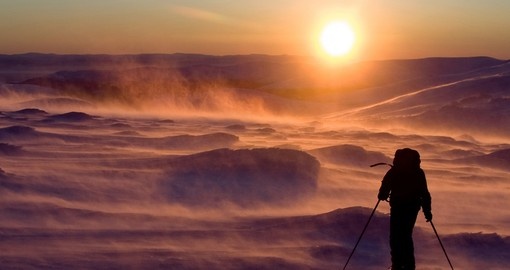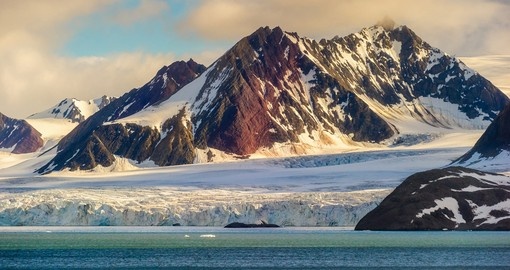Arctic Weather
Greenland has an arctic climate with average temperatures that do not exceed 10° C (50° F) in the warmest summer months. In the southern part of the country and the innermost parts of the long fjords, the temperature can, however, rise to more than 20° C (68° F) in June, July or August. The sea around Greenland affects the climate on land. The stretches of coastline close to the open sea, in particular, are cooled by the sea. Therefore during the summer months, it is warmest and driest on land closest to the ice sheet. In all parts of the country, the weather is locally changeable and can vary from fjord to fjord and from one valley to the next. The air is generally very dry in Greenland in relation to many other countries, and because of this low humidity, the low temperatures do not feel as cold as you might expect. On the other hand, dry air means that you must drink more water than normal. The low humidity also means that you can see further than you are probably used to. Mountain crests that appear to be close are usually further away than you think.
Two major climatic zones, the arctic and sub-arctic, divide the Northwest Territories at the tree line into two almost equal parts. While both regions have extremely cold and long winters, the arctic climate has a shorter and cooler summer, with the average monthly temperature remaining below 10° C (50° F). The sub-arctic climate has a longer and warmer summer, with at least three months having average monthly temperatures exceeding 10° C. The arctic climate is the most northerly climate in the world. It lies north of the tree line and is associated with tundra vegetation. In these frigid lands, summer may bring only a few warm days. With such a short summer, tree growth is not possible. Precipitation is low and mostly occurs in the summer.
A sub-arctic climate prevails over the remainder of the Northwest Territories, particularly in the Mackenzie Valley. This climate is characterized by a much longer and warmer summer. While precipitation is low and summers are still relatively short, sufficient moisture (300 mm/12 in) and warmth make it possible for trees to grow. The sub-arctic climate is associated with the boreal forest, a northern coniferous forest consisting of pine, spruce, fir, and larch.
Get a Trip Quote Order a Brochure



















